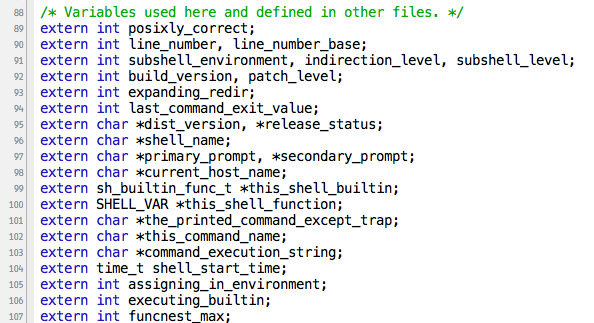It’s the Application Development, Stupid
I love reading blog posts on Plexxi blog (you SHOULD add them to your RSS reader) and the “It’s the Application, Stupid” series from Mat Matthews is no exception. What pleasantly surprised me was that a large enterprise came to the same conclusions I’m preaching for the last few years.
One More Thing: Keyless SSL and CloudFlare’s Growing Network

I wanted to write one more thing about Keyless SSL, our announcement from last week, before attention shifts to what we'll be announcing on Monday. Keyless allows us to provide CloudFlare's service without having private SSL keys stored locally on our edge servers. The news last week focused on how this could allow very large customers, like major financial institutions, to use CloudFlare without trusting us with their private keys.
But there's another use that will benefit the entire CloudFlare userbase, not just our largest enterprise customers, and it's this: Keyless SSL is a key part of our strategy to continue to expand CloudFlare's global network.
CloudFlare's Global Network Today
CloudFlare's network today consists of 28 edge data centers that span much of the globe. We have technical and security requirements for these facilities in order to ensure that the equipment they house remains secure. Generally, we're in Tier III or IV data center facilities with the highest level of security. In our San Jose facility, for instance, you have to pass through 5 biometric scans, in addition to multiple 24x7 manned guard check points, before you can get to the electronically locked cabinets housing our servers.
There Continue reading
The shockingly obsolete code of bash
One of the problems with bash is that it's simply obsolete code. We have modern objective standards about code quality, and bash doesn't meet those standards. In this post, I'm going to review the code, starting with the function that is at the heart of the #shellshock bug, initialize_shell_variables().K&R function headers
The code uses the K&R function headers which have been obsolete since the mid-1980s.
I don't think it's there to support older compilers, because other parts of the code use modern headers. I think it's there simply because they are paranoid about making unnecessary changes to the code. The effect of this is that it messes up static analysis, both simple compiler warnings as well as advanced security analysis tools.
It's also a stylistic issue. There's only one rule to coding style, which is "avoid surprising things", and this is surprising.
Ultimately, this isn't much of an issue, but a symptom that there is something seriously wrong with this code.
Global variables everywhere
Global variables are bad. Your program should have a maximum of five, for such things as the global debug or logging flag. Bash has hundred(s) of global variables.
Also note that a large number of Continue reading
Wi-Fi SNR to MCS Data Rate Mapping Reference
I previously posted a picture of an SNR to MCS data rate mapping table that I have compiled based on various sources of credible research. Keith Parsons has kindly put this information into a printable format for reference. You can download them below.It should be noted that individual devices perform differently. These tables are simply generic estimates that are a good approximation for many Wi-Fi devices. In other words, it's not perfect.
| Click to Download Full Version (PDF) |
This table maps client SNR values to MCS indexes for the purpose of determining the data rates that clients can achieve based on the signal quality of their connection to the AP.
SNR is also related to RSSI. Two RSSI values are of importance: the Minimum Receiver Sensitivity and the Expected Receiver Sensitivity. The 802.11 minimum receiver sensitivity tables often referenced in research and testing material are the required minimum RSSI values that a radio should be able to decode a given modulation type and encoding rate (MCS index) with a packet error rate (PER) less than 10%. Most 802.11 radios provide better receiver sensitivity than the minimum requirement. Therefore, the "Expected Receiver Sensitivity" reflects the typical receive sensitivity Continue reading
Celebrating CloudFlare’s 4th Birthday

Since CloudFlare launched to the public four years ago today, we've always considered September 27th our birthday. We like to celebrate by doing something nice for our team and also for our customers. Two years ago, for example, we brought a cake into the office and then enabled free IPv6 support for all our customers.
Saturday is our birthday this year, so we decided to celebrate it a few days later when we'd all be back in the office on Monday, September 29th. That actually corresponds to the day we presented at the finals of the TechCrunch Disrupt startup contest where we launched. We ended up coming in second. Mike Arrington, the founder of TechCrunch, said we were basically "muffler repair for the Internet."
Looking back, that's actually not a bad description. At core, CloudFlare's mission is to help build a better Internet by fixing its biggest problems -- its metaphorical rusty mufflers. This year, we thought it would be great to repair a big, ugly muffler that should have been fixed a long time ago.
This Monday, we'll bring a cake into the office. (It'll have to be a lot bigger as our team has grown substantially.) Continue reading
HP switches: copy configuration between different device models
A couple of days ago I did a planned software upgrade of an HP5406zl. Since the installed firmware version was quite old it was not possible to update directly to the latest release, an upgrade path must be followed: This is…Knowing Your Audience…and Showing It
We all know that you’re supposed to “Know Your Audience.” Doing so improves engagement, and avoids faux pas like “Suggested Tweets.” But recently I realised that this doesn’t have to be subtle. Drop hints early on in your presentation that you’ve taken the time to understand the audience – it can really lift the mood.
Suggested Tweets – Just Say No
Companies that obsess about the wrong kind of metrics think that all they need is to get their message repeated many times. So they give employees & partners a list of “suggested tweets.” These are pre-written Tweets that people can send out from their own Twitter accounts, to “generate buzz.” I have seen many companies do this, and it is overwhelmingly lame. It devalues the message, and devalues those who send out these “suggested tweets.”
In the lead-up to the recent Cisco UCS event, many members of the Cisco Champions program sent out the same set of tweets. When I see the same tweet from several people in my stream, it’s obvious what’s going on. If you’re running a marketing Twitter account, then yeah, I expect marketing messages. But if you’re a real person, and I’ve Continue reading
TCP Is a Stream Protocol
I hope you know TCP provides a reliable stream service not reliable packet delivery, but you might not have realized all the implications – I found an old post by Robert Graham explaining how things really work and how you can use them to bypass quick-and-dirty IDS that rely on signatures instead of doing proper protocol decodes.
Classic IOS as a DNS Server
There is an occasional need for a DNS server in the absence of a dedicated host. This may occur in the following situations–
- Using PAT, Public DNS may return a non-RFC1918 address for internal server
- Lab/Demo Environment
- Other Name Resolution challenges in SOHO, SMB or Branch Office
When these corner-case challenges present, an IOS router may be beneficial by providing basic DNS functions. Assuming the router already has Internet connectivity, the configuration is straightforward–
//enable the dns server functionality IOS-DNS(config)#ip dns server //if public requests should be resolved, configure one or more name //servers as resolvers and confirm domain-lookups are enabled IOS-DNS(config)#ip name-server 8.8.8.8 8.8.4.4 IOS-DNS(config)#ip domain-lookup
At this point the router should perform DNS resolution by relaying requests to the public name servers in the configuration. Hosts could use any IP address on the device in their DNS configuration. ACLs should be used to block DNS requests to interfaces that aren’t servicing clients.
To create DNS records for local resolution, the ip host command can be used.
IOS-DNS(config)#ip host ?
WORD Name of host
view Specify view
vrf Specify VRF
IOS-DNS(config)#ip host www.example.com ?
Default telnet port number
A.B.C.D Host IP address
additional Append addresses
mx Configure a Continue reading
Do shellshock scans violate CFAA?
In order to measure the danger of the bash shellshock vulnerability, I scanned the Internet for it. Many are debating whether this violates the CFAA, the anti-hacking law.The answer is that everything technically violates that law. The CFAA is vaguely written allowing discriminatory prosecution by the powerful, such as when AT&T prosecuted 'weev' for downloading iPad account information that they had made public on their website. Such laws need to be challenged, but sadly, those doing the challenging tend to be the evil sort, like child molesters, terrorists, and Internet trolls like weev. A better way to challenge the law is with a more sympathetic character. Being a good guy defending websites still doesn't justify unauthorized access (if indeed it's unauthorized), but it'll give credence to the argument that the law is unconstitutionally vague because I'm obviously not trying to "get away with something".
Law is like code. The code says (paraphrased):
intentionally accesses the computer without authorization thereby obtaining informationThere are two vague items here, "intentionally" and "authorization". (The "access" and "information" are also vague, but we'll leave that for later).
The problem with the law is that it was written in the 1980s before the web Continue reading
Change HTTP reply content with AppShape++
Lab goal
Use VIP 10.136.85.14
Setup
1 | /c/slb/real 1 |
Alteon configuration
Remember routing! The returning traffic needs to go through the Alteon, otherwise TCP will break. So we also need to configure Proxy IP/SNAT so return traffic will go through the Alteon.
1 | /c/slb/virt 85_14 |
Next we need to write the Appshape++ script:
1 |
Plexxi Pulse—Preparing for Big Data
Plexxi Pulse—Preparing for Big Data
As enterprises launch Big Data platforms, it is necessary to tailor network infrastructure to support increased activity. Big Data networks must be constructed to handle distributed resources that are simultaneously working on a single task—a functionality that can be taxing on existing infrastructure. Our own Mike Bushong contributed an article to TechRadar Pro this week on this very subject where he outlines the necessary steps to prepare networks for Big Data deployments. He also identifies how software-defined networking can be used as a tool to alleviate bandwidth issues and support application requirements when scaling for Big Data. It’s definitely worth a read before you head out for the weekend.
In this week’s PlexxiTube of the week, Dan Backman explains how Plexxi’s Big Data fabric mitigates incast problems.
Check out what we’ve been up to on social media this September. Enjoy!
The post Plexxi Pulse—Preparing for Big Data appeared first on Plexxi.
Cisco device configuration using Netconf
This blog is part of my series on Devops for Networking. In this blog, I will cover how to configure and monitor Cisco NXOS devices using Netconf. In 1 of my earlier blogs, I have provided basics of Netconf and Yang. I have used Nexus 3k switch for my experiments below. Netconf has the following … Continue reading Cisco device configuration using NetconfSchprokits with Jeremy Schulman on Software Gone Wild
Jeremy Schulman was the driving force behind the Puppet agent that Juniper implemented on some Junos switches (one of the first fully supported Puppet-on-a-switch implementations). In the meantime, he quit Juniper and started his own company focused on a network automation product – more than enough reasons to chat with him on Software Gone Wild.
Read more ...IPv6 in my streaming media? More likely than you think!
Not that I go out of my way to endorse one project/product over another, there is one that I have recently fallen in love with for streaming my media. Especially when it can use IPv6! So I needed a cross-platform solution for my streaming media needs. I was originally using XBMC, but only had it tied into the TV. I use several other computers and devices, in other locations outside of the house. So I read up on Plex. Got it installed with little to no effort, and could readily access my content where ever I was. I even tested this on my last trip to London, UK and was able to get a decent 1.2mbit/s stream from my house. Only issue was that it wasn’t using IPv6 in the app or accessing via plex.tv (server on that site only comes up with an IPv4 address).
So poking around I discovered 2 things: 1) I could access the Plex server directly at the IP/hostname of the server, and 2) there was a checkbox to enable IPv6!!
Simply browse to your Plex server, click on the settings icon (screwdriver + wrench), select Server, click on Networking and then “Show Continue reading
Many eyes theory conclusively disproven
Just because a bug was found in open-source does not disprove the "many eyes" theory. Instead, it's bugs being found now that should've been found sometime in the last 25 years.Many eyes are obviously looking at bash now, and they are finding fairly obvious problems. It's obvious that the parsing code in bash is deeply flawed, though any particular bug isn't so obvious. If many eyes had been looking at bash over the past 25 years, these bugs would've been found a long time ago.
Thus, we know that "many eyes" haven't been looking at bash.
The theory is the claim promoted by open-source advocates that "many eyes makes bugs shallow", the theory that open-source will have fewer bugs (and fewer security problems) since anyone can look at the code.
What we've seen is that, in fact, very few people ever read code, even when it's open-source. The average programmers writes 10x more code than they read. The only people where that equation is reversed are professional code auditors -- and they are hired primarily to audit closed-source code. Companies like Microsoft pay programmers to review code because reviewing code is not otherwise something programmers like to do.
From Continue reading
MidoNet for the Overlay, Cumulus Linux for the Underlay. Like Coffee and Cream.
VTEP is not the only way MidoNet customers can use a switch that runs Cumulus Linux as the underlay (physical network) for the virtual, overlay networks.
We’ve announced our partnership to work with Cumulus Networks earlier in 2014 to use Cumulus Linux as a Layer-2 VxLAN Gateway to bridge VLANs in the virtual network world to the VLANs in the physical world.
We’ve shipped that code as part of MidoNet version 1.6.
We now want to talk about how VTEP is not the only way MidoNet customers can use a switch that runs Cumulus Linux as the underlay (physical network) for the virtual, overlay networks. Just don’t think of running a set of gateway switches as the only way to benefit from these devices, we see many opportunities and benefits.
Here are some examples why it makes sense :
Automation
Remember that Cumulus Linux IS Linux. It’s not a switch OS that just happens to be based on Linux. It offers cloud automation capabilities that is so crucial to customers who are adopting to move towards building a Cloud. If you listen to Customers, Systems like Chef and Puppet are widely used in the deployment of systems like OpenStack, Continue reading




